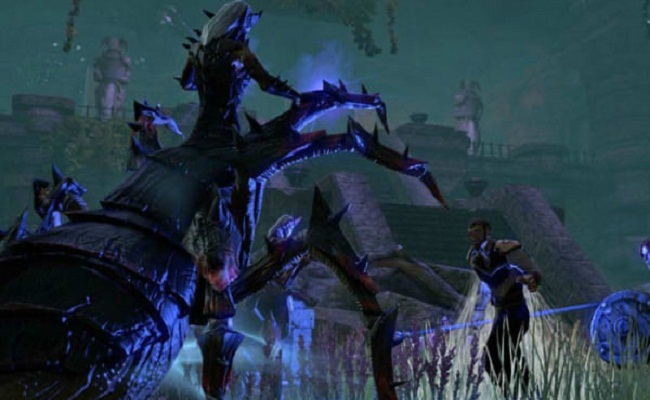With a plethora of MMOs constantly being released, there are a few elements that seem to be missing in all of them. Commercials focus on the genre of the game when they talk about plot, rather than the actual plot details, and will always emphasize customization even if it’s a low level of customization compared to other MMOs. Sometimes they won’t even go that far–they’ll just show a vague run-down of the classes available and leave it at that. I realize that MMOs are a huge new market to tap into for video game developers, but there comes a point where a genre can become oversaturated. In between all the Runescape, World of Warcraft, and Maplestory knock-offs, there’s very little sustenance out there for an avid MMO fan. What on earth can we expect out of these games anymore? Well, as it turns out, quite a lot.
Just because the medium has become oversaturated with high fantasy MMOs, that does not mean that there is no room to explore or innovate. We see this all the time with new FPS or RPG games–although the genre that Inversion or Skyrim are launched in are heavily saturated, they still found a way to innovate and make themselves stand out from the other games. There are plenty of ways for MMOs to do the same thing, although fewer and fewer developers are making this leap into unknown territory.
To start with, many of the elements that make MMOs successful–the character customization, classes, skill trees, and so on–have received very little overhaul from recent developers. Although some may claim to innovate by getting rid of the class or skill system entirely, there are always other customization options that closely resemble the class and skill system of older games. User accessibility is one thing, but if you want to catch the attention of hardcore MMO players, actually putting some unique customization into your game is a huge plus.
There are other ways to innovate that have seen some use outside of the MMO genre, but haven’t graced the medium as a whole yet. Built-in social features such as a vocal chat system, an improved party or social system, and incentives for using them are incredibly convenient for gamers but noticeably absent in many of the more popular online games. Sparkling, CPU-intensive graphics are beautiful, but latency can prove to be a bitch when traveling with a party, and more games should take this into account. Rather than reducing bandwidth by optimizing the game for everyone, they could group gamers by their latency and adjust the graphics and audio quality accordingly–this is already a concept practiced in cloud-gaming.
It might seem a little nit-picky to get mad about small stuff like this, but with very few innovative MMOs hitting the market, it’s just something to keep in mind. The genre has a huge amount of potential, but very few developers are using it to its fullest. With indie MMOs becoming possible as programming them becomes more simple (or perhaps just widespread), we might see more innovative titles hitting the market. However, it would be awesome if large-scale developers who are already pouring thousands or hundreds of thousands into the development of an MMO would take these things into account.

Some one should implement parallel maps. Allowing for alternate dimension abilities & classes that can see each other in another realm but cannot be seen by the world they view. THings like angels, demons, ghosts. etc. Items that allow viewing into other dimensions etc…..
Pass this along I have been mentioning it for 3 years now & it just gets wiped under the table. None of the game coding libraries out there support this inherently, yet.